
12 Best Lunch Spots In Napa
Best Lunch In Napa – Our 12 Favorite Spots! Lunch is a must when you’re out wine tasting! Whether you’re in the mood for a

While most people regard wine with a sense of reverence and think it’s for the highly sophisticated, I’m here to tell you that it’s for everyone! And it’s so much FUN to figure out – what does wine taste like.
With its remarkable array of flavors and aromas, understanding what differentiates one glass from another is not as hard as you would believe. In fact, getting acquainted with the aromas and flavors unique to each type of wine will elevate your experience.
So first, it’s important to understand that wine is made from fermented grapes, and the taste of the wine is influenced by:
Plus there are many different grape varietals, each with its own unique flavor profile, and terroir (climate, soil, and growing conditions of the vineyard) which will also have a significant impact on the taste of the wine.

Aroma: The aroma of wine is often referred to as the “nose” or the “bouquet” of the wine. Because it’s the scent that you smell when you first bring the glass of wine to your nose. Some common aromas include fruity notes like berries, apples, or citrus, as well as more complex aromas like earthy or floral scents.
Acidity: The level of acidity in wine can greatly influence the taste of the wine. So, wines with high acidity can taste crisp and refreshing, while wines with low acidity may taste flat or dull.
Tannins: Tannins are compounds found in the skins, seeds, and stems of grapes. And therefore, wines with high tannin levels can taste astringent and bitter, while wines with low tannin levels can taste soft and smooth. Also, red wines are typically higher in tannins than white wines, and the level of tannins can vary widely depending on the grape varietal and fermentation process.
Body: The body of wine refers to the weight and texture of the wine in your mouth. So, wines with a full body feel rich and heavy, while wines with a lighter body feel more delicate and airy. For instance, non-fat milk is light bodied whereas whole milk is creamy and full bodied.
Finish: The finish of wine refers to the aftertaste that lingers in your mouth after you’ve swallowed the wine. With this in mind, a long finish is considered desirable, as it allows you to savor the flavors of the wine long after you’ve finished your sip.
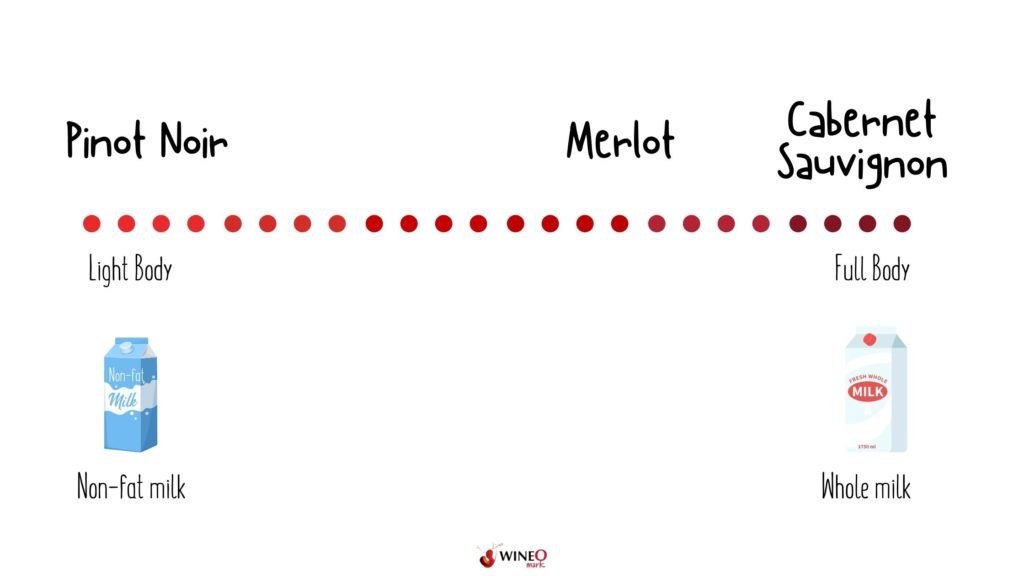
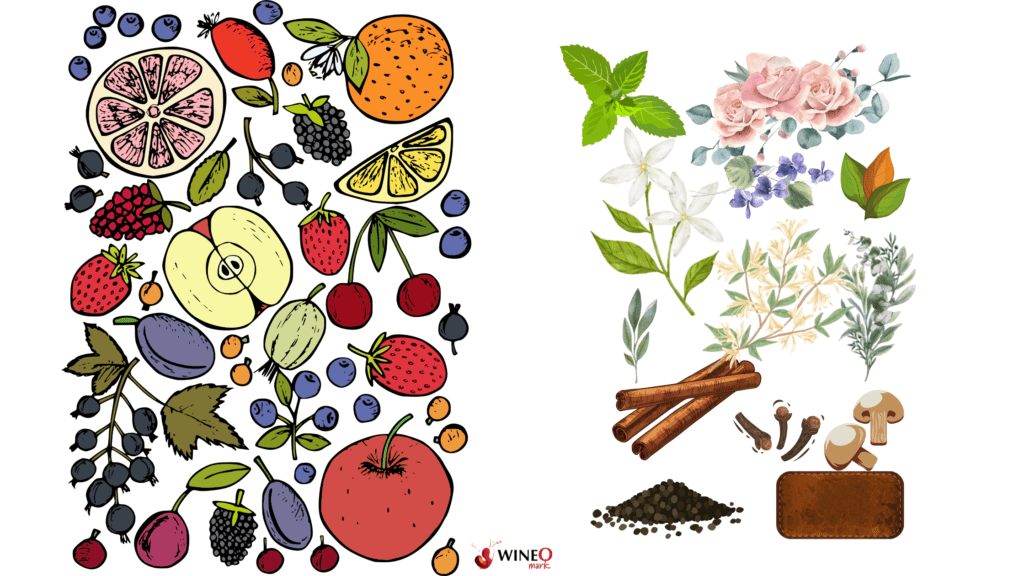
Primary aromas of wine are the scents and flavors that are directly related to the grape variety used in making the wine. And these aromas can be influenced by factors such as the climate, soil, and vineyard practices where the grapes were grown, as well as the winemaking process itself. Finally the primary flavors of wine can be further classified into two main categories: fruity and non-fruity.
Fruity aromas are the most commonly associated primary aromas of wine. These aromas can include:
Non-fruity aromas, on the other hand, are less commonly associated with wine but can add complexity and interest to the wine. These aromas can include:
So next time you’re at a wine tasting, try to name some of these fruit aromas in your wine!
Now let’s go through what are called secondary and tertiary flavors in wine, which develop during the aging process and are a result of the chemical reactions that take place between the wine and its environment. By comparison, these aromas and flavors are more subtle and complex than primary aromas and flavors, and can add depth and richness to the wine.
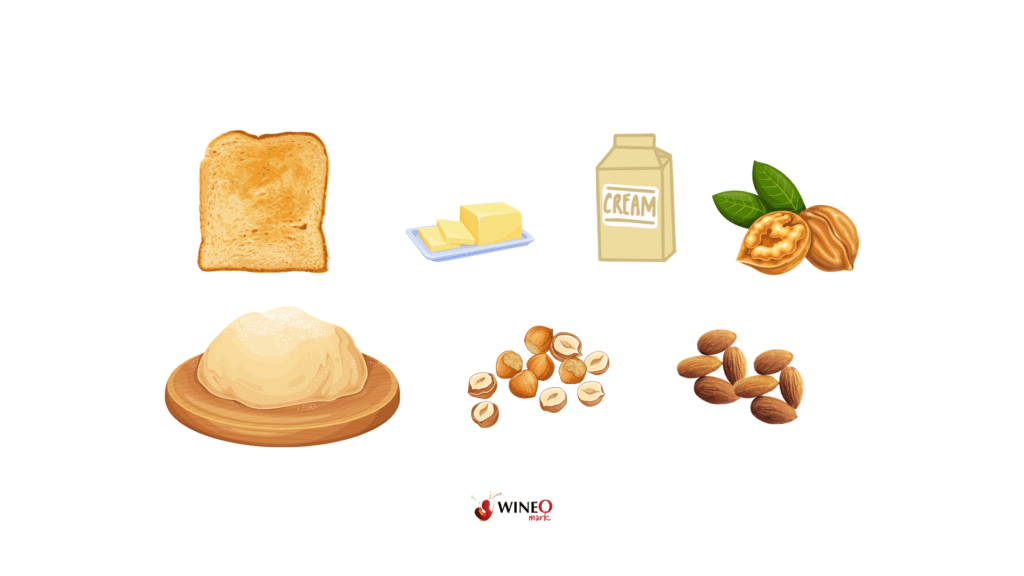
Secondary flavors in wine are a result of the fermentation process and can include:
These aromas and flavors are often associated with white wines that have undergone malolactic fermentation, a process where the sharp malic acid in the wine is converted into softer lactic acid.
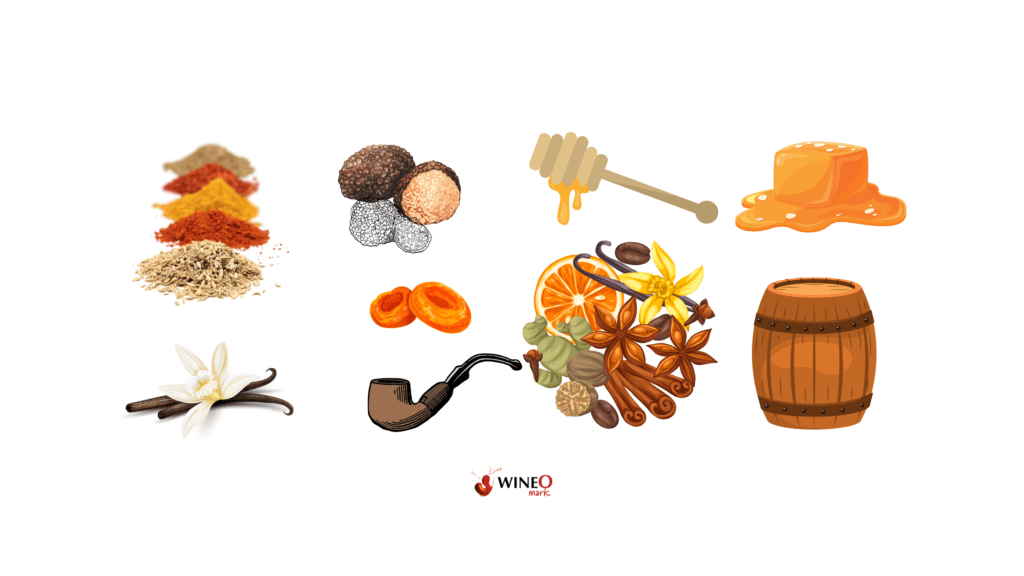
Tertiary flavors in wine develop as a result of aging in oak barrels or in the bottle over an extended period of time. These aromas and flavors can include:
These aromas and flavors are often associated with red wines that have been aged for several years in the bottle or in oak barrels.
In summary, tasting and identifying the aromas and flavors of wine can be a fun and rewarding experience for all wine drinkers.
And it’s important to take your time and pay attention to the different scents and flavors present in the wine, as well as the way they change and evolve as the wine opens up in the glass.
By developing your palate and honing your sensory skills, you can gain a deeper appreciation and understanding of the complexities of wine. And you can show off at your next wine tasting!
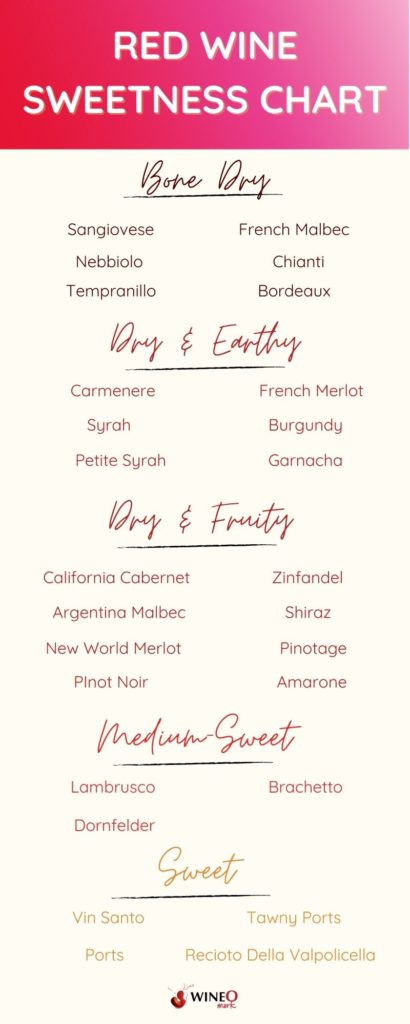
Red wine tastes different depending on the type of grape used, where the grapes were grown, and the winemaking process. However, in general, red wine can have a range of flavors that can include:
The combination of these flavors creates the overall taste of red wine. And some wines may have more prominent fruit flavors, while others may have a more pronounced earthy or oaky taste.
Plus, the texture of red wine can also vary, ranging from light and easy-drinking to full-bodied and robust. Finally, the tannins in red wine can contribute to a wine’s mouthfeel, giving it a firm or chewy texture.
In general, red wines tend to be more complex and have a longer finish compared to white wines, which can make them great for pairing with food. And they can be enjoyed on their own or paired with a range of dishes, from grilled meats to hearty stews or pasta dishes.

Rosé wine can taste different depending on the type of grape used, where the grapes were grown, and the winemaking process. However, in general, rosé wine can have a range of flavors that can include:
So the combination of these flavors creates the overall taste of rosé wine. And some rosé wines may have more prominent fruit or floral flavors, while others may have a more pronounced mineral and herbal taste. Also the texture of rosé wine can also vary, ranging from light and refreshing to medium-bodied and slightly tannic.
Rosé wine is made by allowing the grape skins to remain in contact with the juice for a shorter amount of time than in red wine production, which creates its characteristic pink color. So this shorter time also results in less tannins and a lighter color and body compared to red wines. And Rosé wine can be made from a variety of grapes, including Grenache, Syrah, Mourvèdre, Pinot Noir, and Zinfandel.
In general, Rosé wines tend to be more versatile than red or white wines when it comes to food pairing. They can be enjoyed on their own as an aperitif, or paired with a range of dishes, from light salads and seafood to grilled meats or spicy dishes. Therefore, Rosé wine is also a popular choice for outdoor gatherings and summer events due to its refreshing taste and light body.
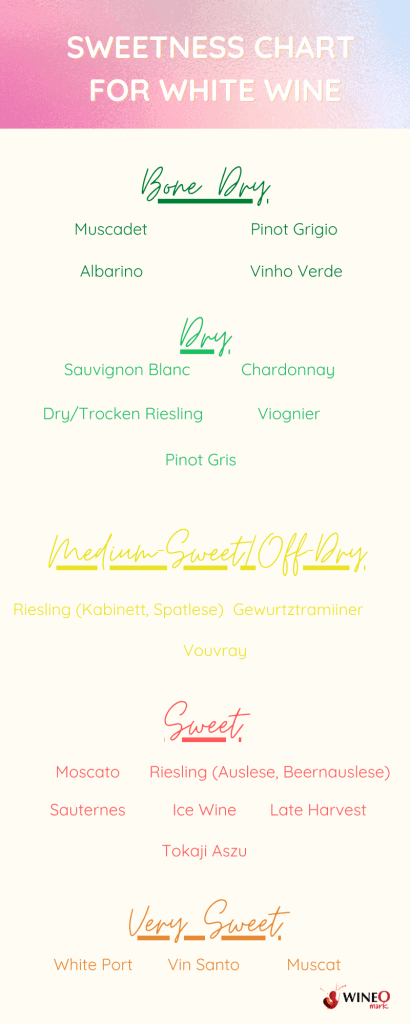
White wine can taste different depending on the type of grape used, where the grapes were grown, and the winemaking process. However, in general, white wine can have a range of flavors that can include:
In conclusion, some white wines may have more prominent fruit or floral flavors, while others may have a more pronounced mineral or herbal taste. Plus, the texture of white wine can also vary, ranging from light and refreshing to full-bodied and creamy. Finally, the level of sweetness can also differ, ranging from bone dry to off-dry or even sweet.
In general, white wines tend to be more straightforward and have a shorter finish compared to red wines.
In summary, wine is an enjoyable yet complex beverage with a wide range of flavors and aromas. And understanding what wine tastes like can greatly enhance your enjoyment of the drink and help you appreciate the different nuances and subtleties of different wine varietals.

Best Lunch In Napa – Our 12 Favorite Spots! Lunch is a must when you’re out wine tasting! Whether you’re in the mood for a

North Coast Wine Co. Outerbound Pinot Noir – WineO Mark Review Wine Stats Grape Variety: 100% Pinot Noir Vintage: 2019 ABV: 14% Wine Region: North Coast,

Böen Pinot Noir – WineO Mark Review Wine Stats Grape Variety: 100% Pinot Noir Vintage: 2021 ABV: 14.6% Wine Region: California Flavor Profile: Cherry, raspberry, blackberry,

Merry Edwards Sauvignon Blanc – WineO Mark Review Wine Stats Grape Variety: 100% Sauvignon Blanc Vintage: 2022 ABV: 14% Wine Region: Russian River Valley, California

The Hess Collection Allomi Chardonnay – WineO Mark Review Wine Stats Grape Variety: 100% Chardonnay Vintage: 2019 ABV: 14.3% Wine Region: Napa Valley, California Flavor Profile:

Stags’ Leap Chardonnay – WineO Mark Review Wine Stats Grape Variety: 100% Chardonnay Vintage: 2022 ABV: 14.1% Wine Region: Napa Valley, California Flavor Profile: Oak, vanilla,

Godeval Cepas Vellas Godello – WineO Mark Review Wine Stats Grape Variety: 100% Godello Vintage: 2021 ABV: 13% Wine Region: Valdeorras, Spain Flavor Profile: Peach,

Félix Solís Mucho Más Tinto N.V. – WineO Mark Review Wine Stats Grape Variety: Tempranillo, Syrah Vintage: Non-Vintage ABV: 14% Wine Region: Spain Flavor Profile: Vanilla,
